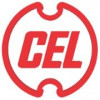Deputy Engineer
40+ Deputy Engineer Interview Questions and Answers

Asked in Wabtec

Q. What is the role of the diesel engine, alternator, rectifier, and propulsion equipment in a diesel locomotive?
The diesel engine, alternator, rectifier, and propulsion equipment work together to power and drive a diesel locomotive.
The diesel engine is responsible for converting diesel fuel into mechanical energy to power the locomotive.
The alternator generates electricity to power the various electrical systems on the locomotive.
The rectifier converts the alternating current (AC) produced by the alternator into direct current (DC) for use by the locomotive's systems.
The propulsion equ...read more

Asked in Bharat Electronics

Q. If a current is transmitted and Ic is the transmitter at zero modulation index, what will the transmitted current be at a modulation index of m?
At zero modulation index, the transmitted current will be zero. At modulation index m, the transmitted current will be proportional to m.
At zero modulation index, Ic is the transmitter and the transmitted current is zero.
At modulation index m, the transmitted current will be proportional to m.
The relationship between modulation index and transmitted current can be expressed as: I_transmitted = m * Ic.
Deputy Engineer Interview Questions and Answers for Freshers

Asked in Wabtec

Q. What components are involved in a locomotive and how do they work?
A locomotive consists of various components such as engine, wheels, brakes, and electrical systems that work together to power and control the train.
Engine: Provides power to move the train by burning fuel or using electricity.
Wheels: Connect the locomotive to the tracks and allow it to move forward and backward.
Brakes: Control the speed and stop the train when needed.
Electrical systems: Provide power for lights, signals, and other functions on the train.
Transmission: Transfe...read more

Asked in Wabtec

Q. How AC motor and DC motor works and how many types of communication system is used in locomotive.
AC motors use alternating current to create a rotating magnetic field, while DC motors use direct current to generate a constant magnetic field. Locomotives use various communication systems like GSM-R and Wi-Fi.
AC motors rely on alternating current to create a rotating magnetic field, which drives the motor's rotation.
DC motors utilize direct current to establish a constant magnetic field, resulting in continuous rotation.
Types of communication systems used in locomotives in...read more

Asked in Wabtec

Q. What is the use of controller, converter, inverter and controller communicate with the system.
Controllers, converters, inverters, and controllers communicate with the system to regulate and control the flow of electricity.
Controllers are used to manage the operation of a system or device.
Converters are used to change the form of electrical energy, such as converting DC to AC.
Inverters are used to convert DC power to AC power.
Controllers communicate with the system to provide feedback and adjust settings as needed.

Asked in Subros

Q. What are the considerations when selecting materials for a mechanical component?
Considerations for selecting materials for mechanical components include strength, durability, corrosion resistance, cost, and compatibility with other materials.
Strength: Ensure the material can withstand the required loads and stresses.
Durability: Choose a material that will not degrade or wear out quickly over time.
Corrosion resistance: Select a material that is resistant to corrosion if the component will be exposed to harsh environments.
Cost: Balance the cost of the mate...read more
Deputy Engineer Jobs




Asked in Allied Engineers

Q. What is the difference between pressure and stress?
Pressure is the force applied on a surface, while stress is the internal resistance of a material to deformation.
Pressure is an external force per unit area, while stress is an internal force per unit area.
Pressure can be measured using instruments like pressure gauges, while stress is calculated using formulas.
Pressure is typically exerted on fluids or gases, while stress is experienced by solid materials.
Examples of pressure include atmospheric pressure, blood pressure, and...read more

Asked in Wabtec

Q. IGBT working principle, compressor working principle. How braking system work in locomotive.
IGBT is a semiconductor device used in power electronics, compressor works by increasing pressure of a gas, braking system in locomotive uses friction to slow down the train.
IGBT stands for Insulated Gate Bipolar Transistor, used for switching high power loads in electronic circuits.
Compressor increases the pressure of a gas by reducing its volume, commonly used in air conditioning systems and refrigerators.
Braking system in locomotive uses friction between brake pads and whe...read more
Share interview questions and help millions of jobseekers 🌟


Asked in Aditya Birla Group

Q. How many types of valves are there in Hydraulics?
There are several types of valves in hydraulics, including directional control valves, pressure control valves, flow control valves, and check valves.
Directional control valves determine the direction of fluid flow in a hydraulic system.
Pressure control valves regulate the pressure of the fluid in the system.
Flow control valves manage the flow rate of the fluid.
Check valves allow fluid to flow in one direction only, preventing backflow.
Other types of valves include relief val...read more

Asked in Subros

Q. What is the least count of a vernier caliper and screw gauge?
The least count of a vernier caliper is 0.02 mm and the least count of a screw gauge is 0.01 mm.
Vernier caliper least count: 0.02 mm
Screw gauge least count: 0.01 mm

Asked in V-Guard Industries

Q. How do you identify resistor values?
Identify resistor values using color codes, multimeters, and standard values for accurate circuit design.
Use the color code: Each color represents a number; for example, red = 2, green = 5.
Measure with a multimeter: Set to resistance mode to directly read the resistor value.
Refer to standard E12/E24 series: Common resistor values include 10Ω, 100Ω, 1kΩ, etc.

Asked in The Ramco Cements

Q. What tests are performed on cement?
Various tests are conducted on cement to ensure quality and performance.
Fineness test to measure the particle size of cement
Setting time test to determine the time taken for cement to set
Soundness test to check for volume stability
Compressive strength test to assess the strength of cement
Chemical analysis to determine the composition of cement

Asked in Subros

Q. Which refrigerant is currently being used?
The most commonly used refrigerant at this time is R-410A, which is a hydrofluorocarbon (HFC) blend.
R-410A is a popular choice due to its high energy efficiency and environmental friendliness.
It is commonly used in air conditioning systems and heat pumps.
R-410A is a hydrofluorocarbon (HFC) blend, which means it does not contain chlorine and is less harmful to the ozone layer compared to older refrigerants like R-22.

Asked in Foxlink India Electric

Q. What is MTTR, How to plan the predictive maintenance
MTTR stands for Mean Time To Repair. Predictive maintenance planning involves analyzing data to identify potential equipment failures.
MTTR is the average time it takes to repair a failed piece of equipment.
To plan predictive maintenance, data is collected and analyzed to identify patterns and potential failures.
This data can include equipment usage, environmental factors, and historical maintenance records.
Based on this analysis, maintenance schedules can be adjusted to preve...read more

Asked in Bharat Electronics

Q. Unit of pressure, what is stress
Stress is a measure of the internal force experienced by a material due to external factors.
Stress is the force per unit area exerted on a material.
It is a measure of the internal resistance of a material to deformation.
Stress can be caused by external factors such as applied forces, temperature changes, or pressure.
The unit of stress is typically expressed in pascals (Pa) or pounds per square inch (psi).
For example, when a weight is placed on a table, the stress on the table...read more

Asked in Amara Raja Energy & Mobility

Q. Tell me about your work with batteries.
Battery work involves designing, testing, and maintaining batteries for various applications.
Designing battery systems for specific requirements
Testing batteries for performance and safety
Maintaining batteries to ensure longevity and efficiency

Asked in JSW Steel

Q. Know about Stainless steel composition?
Stainless steel is a type of steel alloy with a minimum of 10.5% chromium content, which gives it its corrosion-resistant properties.
Stainless steel contains at least 10.5% chromium, which forms a protective oxide layer on the surface.
Other common elements in stainless steel include nickel, molybdenum, and carbon.
Different grades of stainless steel have varying compositions for specific applications.
Examples of stainless steel grades are 304, 316, and 430.

Asked in Subros

Q. Why are the tiers colored only black?
The tiers are black to indicate the level of expertise or access in a hierarchical system.
Black is often associated with power, authority, and sophistication, making it a suitable choice for tiers in a hierarchical structure.
Using different colors for tiers may cause confusion or misinterpretation of the hierarchy.
Black is a neutral color that can easily be paired with other colors for design purposes.
Consistency in color coding helps in maintaining clarity and organization w...read more

Asked in Lea Associates South Asia

Q. What is the code for the overlap of steel?
The code of overlap of steel is IS:800-2007.
The code of overlap of steel is specified in IS:800-2007.
The code provides guidelines for the design and construction of steel structures.
It covers aspects such as material properties, design considerations, and construction practices.
Asked in Design Group Project Consultants

Q. Types of dams and hydraulic losses formula for pipeline
Types of dams include gravity dams, arch dams, and embankment dams. Hydraulic losses in a pipeline can be calculated using the Darcy-Weisbach equation.
Types of dams: gravity dams (e.g. Hoover Dam), arch dams (e.g. Glen Canyon Dam), embankment dams (e.g. Three Gorges Dam)
Hydraulic losses formula for pipeline: Darcy-Weisbach equation - h_f = f * (L/D) * (V^2/2g)
Where h_f is the head loss, f is the Darcy-Weisbach friction factor, L is the length of the pipe, D is the diameter of...read more

Asked in Lea Associates South Asia

Q. How do admixtures work?
Admixtures are chemicals added to concrete or mortar to modify its properties.
Admixtures can improve workability, durability, and strength of concrete.
They can reduce water content, increase setting time, or enhance color.
Examples include water-reducing admixtures, air-entraining admixtures, and accelerating admixtures.

Asked in Central Electronics

Q. Diagram Block diagram of a processor
A processor block diagram shows the components and their interconnections.
A processor consists of an arithmetic logic unit (ALU), control unit, and registers.
The ALU performs arithmetic and logic operations.
The control unit manages the flow of data and instructions.
Registers store data and instructions temporarily.
The processor communicates with other components via buses.
Examples of processors include Intel Core i7, AMD Ryzen, and ARM Cortex-A53.

Asked in Aditya Birla Group

Q. What is erection and commissioning?
Erection and commissioning refer to the process of setting up and making operational a new system or equipment.
Erection involves assembling and installing the components of a system or equipment according to the design specifications.
Commissioning involves testing, adjusting, and fine-tuning the system or equipment to ensure it functions correctly and efficiently.
Erection and commissioning are crucial steps in the implementation of any new project or equipment.
Examples includ...read more

Asked in Foxlink India Electric

Q. Preventive maintenance plan, Why why why analysis
Preventive maintenance plan includes Why Why Why analysis to identify root cause of problems and prevent future occurrences.
Preventive maintenance plan is a proactive approach to maintenance that involves regularly scheduled inspections, repairs, and replacements to prevent equipment failure.
Why Why Why analysis is a technique used to identify the root cause of a problem by asking 'why' multiple times until the underlying cause is revealed.
By incorporating Why Why Why analysi...read more

Asked in V-Guard Industries

Q. Compressor types and its working principles
Compressors are mechanical devices that increase the pressure of a gas by reducing its volume.
There are two main types of compressors: positive displacement and dynamic.
Positive displacement compressors work by trapping a volume of gas and then reducing its volume to increase pressure.
Examples of positive displacement compressors include reciprocating, rotary screw, and scroll compressors.
Dynamic compressors work by accelerating the gas to high velocity and then converting th...read more

Asked in Amara Raja Infra

Q. How do you check shuttering level?
Shuttering level can be checked using a spirit level to ensure it is horizontal or vertical.
Use a spirit level to check if the shuttering is horizontal or vertical
Ensure the bubble in the spirit level is centered to indicate level
Adjust the shuttering as needed to achieve the correct level
Check multiple points along the shuttering to ensure consistency

Asked in Amara Raja Energy & Mobility

Q. Why are batteries used in vehicles?
Batteries are used in vehicles to power various electrical components such as lights, radio, and engine starting.
Batteries provide the necessary electrical energy to start the vehicle's engine.
They power essential components like lights, radio, and air conditioning.
Electric vehicles rely entirely on batteries for propulsion.
Batteries store energy generated by the vehicle's alternator for later use.

Asked in Bharat Electronics

Q. Given an array of integers, find two numbers in the array that add up to a specific target value. Optimize for time complexity.
Optimized code for finding pairs in an array that sum up to a given value
Use a hash table to store the difference between the target value and each element in the array
Iterate through the array and check if the current element is in the hash table
If it is, then a pair with the target sum has been found
Time complexity can be reduced to O(n) using this approach

Asked in Subros

Q. How does an AC cycle work?
AC cycle works by using a refrigerant to absorb heat from inside a space and release it outside, creating a cooling effect.
AC cycle starts with the refrigerant absorbing heat from inside the space, cooling the air.
The refrigerant then moves to the compressor where it is pressurized and heated.
Next, the hot refrigerant moves to the condenser coil where it releases heat to the outside air.
The refrigerant then goes through an expansion valve, reducing its pressure and temperatur...read more
Asked in Grabizz

Q. What is the company name?
Campani name refers to the name of a type of bell foundry in Italy known for producing high-quality bells.
Campani name is a term used in the context of bell-making in Italy.
It is associated with producing bells of exceptional quality and craftsmanship.
An example of a famous Campani name is the Pontifical Foundry Marinelli in Agnone, Italy.
Interview Questions of Similar Designations
Interview Experiences of Popular Companies








Reviews
Interviews
Salaries
Users

















